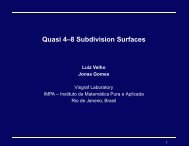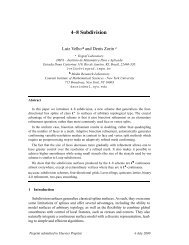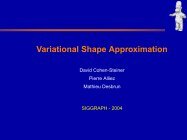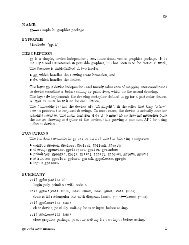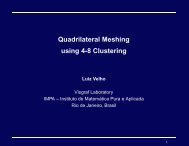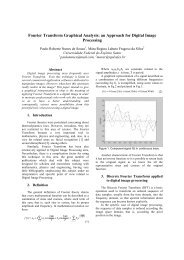Mathematical Optimization in Graphics and Vision - Luiz Velho - Impa
Mathematical Optimization in Graphics and Vision - Luiz Velho - Impa
Mathematical Optimization in Graphics and Vision - Luiz Velho - Impa
You also want an ePaper? Increase the reach of your titles
YUMPU automatically turns print PDFs into web optimized ePapers that Google loves.
2.7. THE PROBLEM OF POSING PROBLEMS 29<br />
L<strong>in</strong>ear programs<br />
A very important situation occurs when both the objective <strong>and</strong> the constra<strong>in</strong>t functions<br />
are l<strong>in</strong>ear <strong>and</strong>, moreover, the constra<strong>in</strong>ts are def<strong>in</strong>ed either by equalities or<br />
<strong>in</strong>equalities, that is, the constra<strong>in</strong>ts are given by l<strong>in</strong>ear equations <strong>and</strong> l<strong>in</strong>ear <strong>in</strong>equalities.<br />
As we have remarked before, the solution set is a solid polyhedron<br />
of the euclidean space. <strong>Optimization</strong> problems of this nature are called l<strong>in</strong>ear<br />
programs <strong>and</strong> their study constitute a sub-area of optimization. In fact, several<br />
practical problems can be posed as l<strong>in</strong>ear programs, <strong>and</strong> there exists a huge number<br />
of techniques that solve them, exploit<strong>in</strong>g its characteristics: the l<strong>in</strong>earity of<br />
the objective function <strong>and</strong> the piecewise l<strong>in</strong>ear structure of the solution set (polyhedra).<br />
2.7 The problem of pos<strong>in</strong>g problems<br />
Most of the problems <strong>in</strong> general, <strong>and</strong> <strong>in</strong> particular the problems from computer<br />
graphics, can be posed us<strong>in</strong>g the concept of operator between two spaces. 1 These<br />
problems can be classified <strong>in</strong> two categories: direct <strong>and</strong> <strong>in</strong>verse problems.<br />
Direct problem. Given two spaces O 1 <strong>and</strong> O 2 of graphical objects, an operator<br />
T : O 1 → O 2 , <strong>and</strong> a graphical object x ∈ O 1 . Problem: compute the object<br />
y = T (x) ∈ O 2 . That is, we are given the operator T <strong>and</strong> a po<strong>in</strong>t x <strong>in</strong> its doma<strong>in</strong>,<br />
<strong>and</strong> we must compute the image y = T (x)<br />
Because T is an operator, it is not multi-valued, therefore the direct problem<br />
always has a unique solution.<br />
Inverse problems.<br />
There are two types of <strong>in</strong>verse problems:<br />
Inverse problem of first k<strong>in</strong>d. Given two spaces O 1 e O 2 of graphic objects,<br />
an operator T : O 1 → O 2 , <strong>and</strong> an element y ∈ O 2 , determ<strong>in</strong>e <strong>and</strong> object x ∈ O 1<br />
tal que T (x) = y. That is, we are given an operator T <strong>and</strong> a po<strong>in</strong>t y, belong<strong>in</strong>g to<br />
1 In some books the use of the term operator implies that it is l<strong>in</strong>ear. Here we use the term to<br />
mean a cont<strong>in</strong>uous function.





